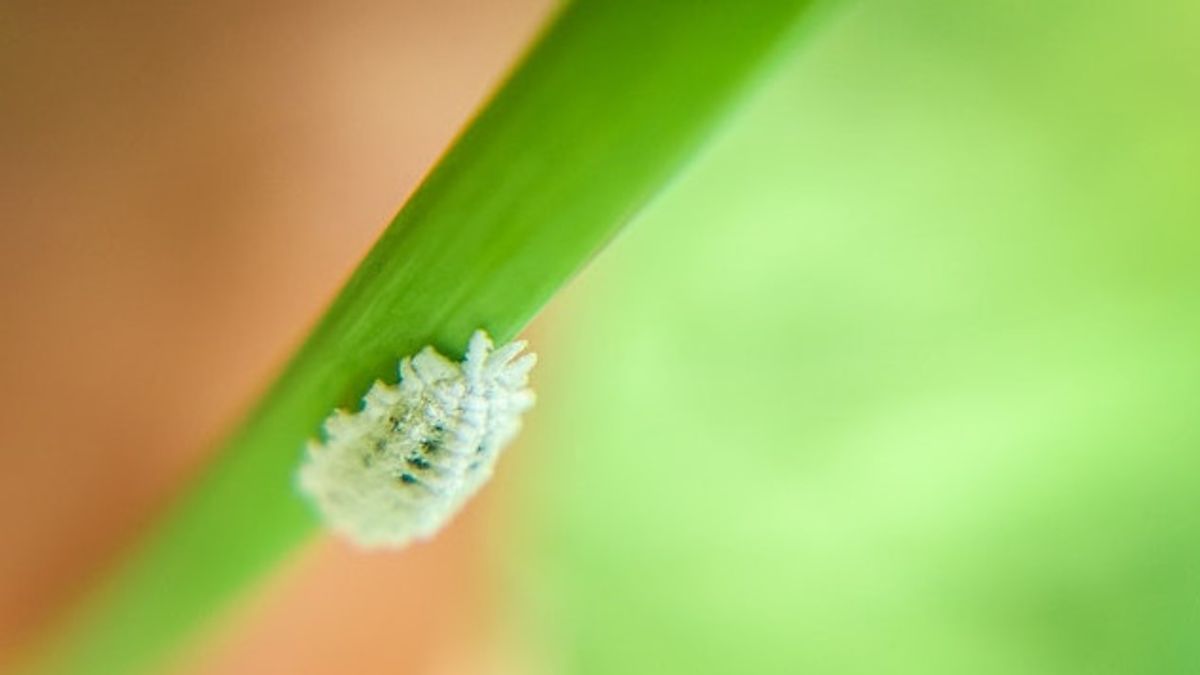JAKARTA - Despite taking good care of plants, plant pest attacks are often inevitable. Pest attacks occur and are more likely to occur when plants are stressed or weakened. To prevent the manifestation of insect pests, get used to checking your plants regularly, looking under the leaves and in the ground to look for insects and other creatures.
Food leaves that turn yellow, dry, or look damaged, so that no dirt can be eaten by pests. Every time you bring home a new ornamental plant, the quarantine of the plant is far from other plants. Isolation will stop the possibility of spreading diseases or pests.
Reported by Rider's Digest, Tuesday, April 11, here are some insect pests that attack plants the most and how to eradicate them.
Known as adents, aphids are small ever-shaped insects that suck the sap of the plant. You will often see them eat new shoots or stems of the plant, which can cause the leaves to change shape, curl or turn yellow and growth is completely hampered. In addition, aphid leaves a sticky liquid, called honeydew, which encourages fungal growth.
Use a hose to spray it from your plant or clean it with a towel smeared in alcohol. To make sure it doesn't come back, spray your plant two to three times a week with a mixture of water and some soft dish washing soap.
This pest one likes to lay eggs in humid soils of plants that are too much water. After the eggs hatch, they dig further into the soil and eat the roots of plants and other organic plant materials. This aspect does not bite or spread disease to humans but causes problems in plants. If not treated, the agas mold can cause yellowing leaves, growth slows down, withers and roots rot.
Hal yang perlu dilakukan untuk menghapus agas fungal yaitu mengendari tanah. Jika tanah susah kering, coba mengganti pot untuk memberi tanaman awal yang baru. Anda juga bisa memasang ketempat menggunakan vinegara sari apple, basi balik, dan air. Bau vinegar akan menarik agas, yang akan terbantu begitu terkena air soap.
관련 항목:
If you look at white spots on the plant, you may be dealing with dew of flour or mealybugs. Whitebugs are small, white insects, oval-shaped. This ornamental plant pest has a waxy coating and is difficult to spot at first. But once mature, it is likely that these pests have laid hundreds of eggs and sucked in sap from your favorite ornamental plants and stems.
Whitebugs can cause yellowing leaves and loss of fruit, vegetables, and flowers before time. And like many other plant pests, they leave honey dew, which drives the growth of jelaga mushrooms and blocks the sun's rays that plants desperately need.
If you find it early, it's easy enough to eradicate the mealybug by washing it under the water. Another method, apply it directly with a cloth or cotton ball that is smeared into alcohol. Insecticide or neem oil soap will also eradicate the mealybugs. Any method you choose, make sure to check your plants every few days and repeat the maintenance as necessary to ensure the insects disappear.
Also known as lightning flies, thrips are small, sleek, dark insects which are common park pests that can enter and damage indoor plants. The first sign of thrip manifestation is leaves that wither or acne. You will see them crawling and probably flying when they suck sap from leaves, stems, flowers, and buds, usually starting from the underside of the leaves.
Thrips also leaves impurity droplets, which will look like black spots like pernis. How to eradicate them, bring out plants that are exposed to the outside or to the bathroom and rinse the leaves to immediately knock down their population. Spray plants with previously mixed organic insecticide soap or with a mixture of 1 tablespoon of soft liquid soap and 1 liter of diluted water. Also, the Nimba oil spray can also be used.
Spider Tungau often escapes attention because people think their small net is a normal spider web. Usually it's not a spider, but a small muhau that is barely visible to the human eye. Spider sharks usually start to eat at the bottom of the plant leaves, and are most active in dry and hot conditions. The first sign of the spider tuhau attack is the damage to plants such as bright spots on the surface of the leaves.
How to eradicate it, remove the spider mung and destroy the net with a strong flow of water from the hose or shower. Plants can also be treated with insecticide soap or non-profit oil spray. You may have to spray once a week for several weeks to control spider mites attacks.
The English, Chinese, Japanese, Arabic, and French versions are automatically generated by the AI. So there may still be inaccuracies in translating, please always see Indonesian as our main language. (system supported by DigitalSiber.id)














